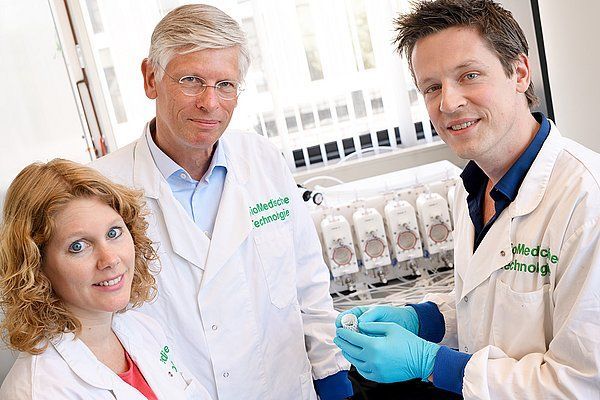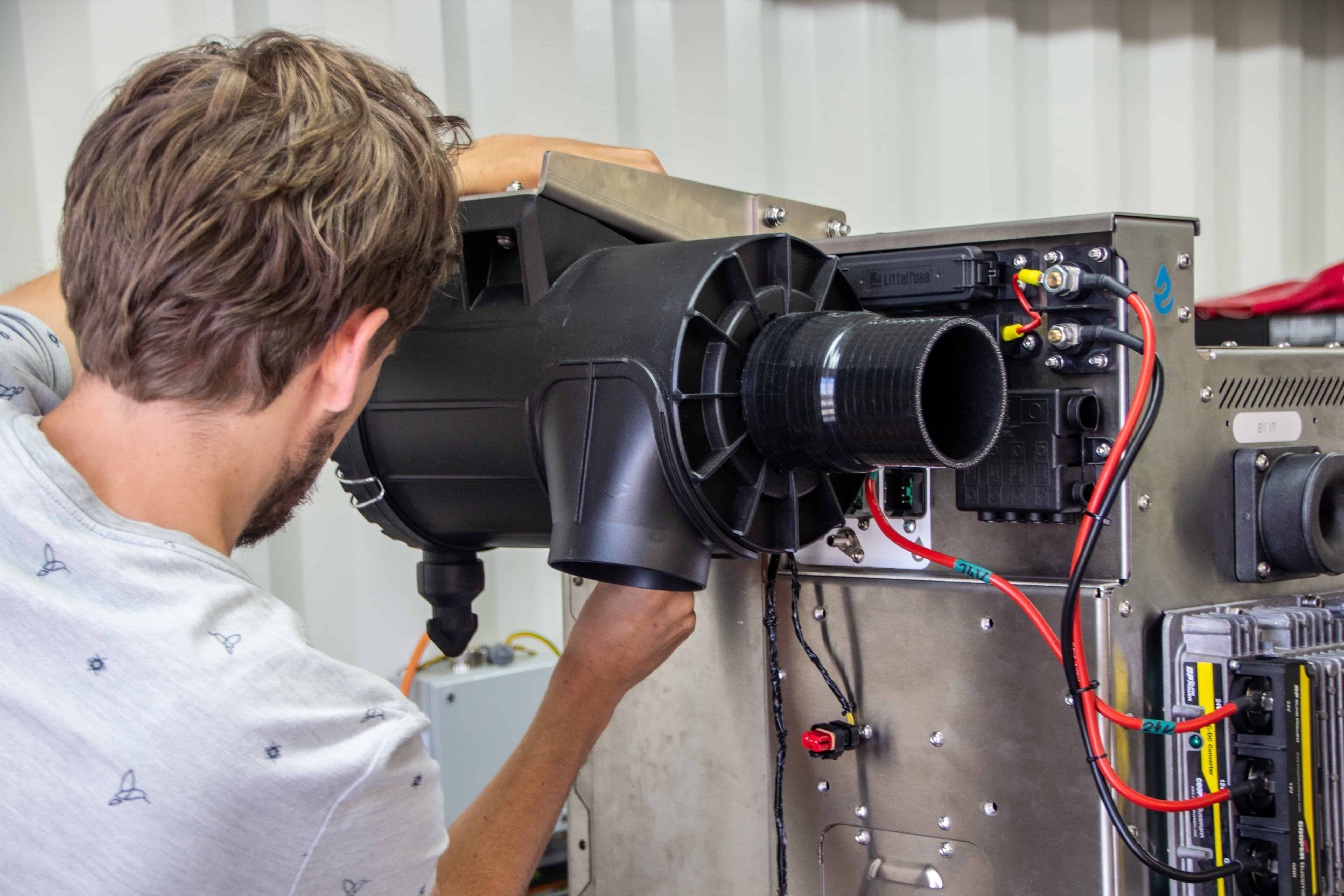
For over fifteen years, scientists have been looking for the golden formula to grow heart valves using body cells. Now a method finally seems to have been found. It creates heart valves that actually continue to do what they are meant to do in the long term: prevent the backflow of blood. Crucial to this is the exact shape of the valves, as discovered by extensive modelling at TU Eindhoven. The results, achieved together with Universität Zürich and Charité Universitätsmedizin Berlin, are described in the journal Science Translational Medicine.
Ten test sheep were given a new heart valve in this study. After a year the valves turned out to function perfectly, which is unique for heart valves that are grown in the laboratory. Because in all previous animal studies, these valves eventually became deformed. In particular, they shrank, making the three valve leaflets too short and thus letting too much blood through. The secret weapon of the new valve leaflets is their ‘belly’.
Researchers from Eindhoven University of Technology have come up with a reliable model for predicting how a valve will develop. The forces that the cells in the valve leaflets undergo play an important controlling role. If this load is not good, then the tissue shrinks too much. On the one hand, the pulsating force that the blood exerts on the valve leaflets and, on the other hand, the shape of the valve determine how the leaflets absorb the forces internally. The Eindhoven researchers calculated that, in order to keep the right shape, the valve leaflets needed a bulge, a belly curvature. The heart valves have been grown in the laboratory using a new technique to obtain this form.
In the test sheep in Berlin, the form changed slightly, but exactly as much as the Eindhoven model had predicted. Moreover, the shape and function of the valves were stable after half a year, which was also predicted. In nine out of ten sheep, the blood flow through the valve after a year was still the same as that of properly functioning ‘normal’ valves.
Except for one sheep, but even that was predicted. “We didn’t get one of the valves properly placed over the old valve. As a result, the load was not optimal, and therefore neither was the development of the valve. After the intervention, we calculated what the effects would be, and that was confirmed,” says a proud Frank Baaijens, professor in Eindhoven. “We can therefore predict success and failure of these valves. Now for the first time we really understand what is happening.”
The cultivation method used starts with an artificial material, in the form of a heart valve, in which the researchers grow cells – all of this outside the body. Within two months, these cells have made their own support structure, the so-called extra-cellular matrix, and the artificial material is completely dissolved. Then the cells are removed from that matrix, and with that a completely biological basis for a heart valve is ready, which can remain on the shelf for a year. Doctors can then insert the cell-less valve into a patient with a minimally invasive procedure via the groin. The inserted valve immediately functions fully and it starts to draw cells from the bloodstream, slowly creating a living, completely biological valve.
Despite the breakthrough, Baaijens expects that it will take several years before the technology undergoes human testing. First the researchers will repeat their work, but then with a bigger series of experiments, so that the results are more reliable. In addition, a large clinical follow-up study has started in Switzerland, where people are getting a blood vessel based on the same technique. If the results of both studies are good, then the first human tests with heart valves can be done. The next step will be the development of heart valves for the high-pressure side of the heart, says Baaijens. “The valves now being developed are on the low-pressure side. It is quite a challenge to make it suitable for the high-pressure side. If that succeeds, then a world of possibilities opens up.”
The paper ‘Computational modeling guides tissue engineered heart valve design for long-term in vivo performance in a translational sheep model’ was published on 9 May in Science Translational Medicine, DOI 10.1126/scitranslmed.aan4587. Professor Simon Hoerstrup from Zurich, who devised the idea for a cultured heart valve in 2001, led the coordination of the research. The modeling work was done in Eindhoven, as was the cultivation of the basic valves. Charité Universitätsmedizin Berlin carried out the experiments.
Bart Sanders, Sandra Loerakker and Frank Baaijens









